Classic modern home design with a spacious kitchen: Imagine a home where clean lines meet timeless elegance, where functionality seamlessly blends with aesthetic appeal. This isn’t just about a house; it’s about crafting a lifestyle. We’re diving deep into the heart of classic modern design, focusing on the kitchen—the beating heart of any home. From selecting the perfect materials and color palettes to integrating smart technology and creating a truly functional space, we’ll explore every detail that makes a classic modern kitchen truly exceptional.
Get ready to be inspired!
This guide explores the key elements of creating a stunning classic modern home with a spacious, functional kitchen. We’ll delve into architectural features, material choices, layout options, appliance integration, and overall design flow, offering practical tips and visually appealing examples to help you bring your dream kitchen to life. We’ll also examine how to seamlessly integrate the kitchen into the broader home design, ensuring a cohesive and stylish living environment.
Defining “Classic Modern” in Home Design
Classic modern home design strikes a harmonious balance between timeless elegance and contemporary functionality. It avoids the stark minimalism of purely contemporary styles and the sometimes overly-decorative elements of traditional designs, instead opting for a refined aesthetic that emphasizes clean lines, sophisticated materials, and a sense of enduring style. This approach ensures a home that feels both current and ageless, resisting the fleeting trends of fast-paced design.Classic modern homes prioritize functionality and livability while maintaining a sophisticated and refined appearance.
The focus is on creating spaces that are both beautiful and practical, using high-quality materials and thoughtful design elements to achieve a timeless aesthetic that will stand the test of time. This style often incorporates elements from various periods, drawing inspiration from both past and present architectural trends, but ultimately creating a cohesive and uniquely modern design.
Architectural Features of Classic Modern Homes
Classic modern architecture is characterized by several key features. These homes often feature symmetrical facades, balanced proportions, and a strong emphasis on horizontal lines. Large windows are common, maximizing natural light and blurring the lines between indoor and outdoor spaces. Simple, geometric forms are preferred, avoiding excessive ornamentation or elaborate detailing. Think clean-lined rooflines, often featuring a gable or hip design, and uncluttered exterior walls.
The overall effect is one of understated elegance and refined simplicity. Many classic modern homes incorporate elements like recessed entryways, porches, or covered patios, adding depth and visual interest without sacrificing the clean aesthetic.
Material Selection in Classic Modern Design
The materials used in classic modern homes are carefully selected to enhance the overall aesthetic and create a sense of enduring quality. Natural materials like wood, stone, and brick are frequently employed, often in combination with high-quality metal accents. Wood, particularly hardwoods like oak or walnut, might be used for flooring, cabinetry, or beams, adding warmth and texture to the space.
Stone, such as granite or marble, can be incorporated into countertops, fireplaces, or exterior cladding, creating a sense of luxury and permanence. Metal, often stainless steel or brushed nickel, is frequently used for hardware, light fixtures, and other details, providing a sleek and modern contrast to the warmer tones of wood and stone. The combination of these materials creates a sophisticated and timeless look that is both elegant and durable.
Classic Modern vs. Other Architectural Styles
While sharing some similarities with other styles, classic modern design has distinct differences. Mid-century modern, for instance, often features more playful use of color and geometric patterns, and a stronger emphasis on functionality over ornate detailing. Contemporary design, on the other hand, tends towards a more minimalist aesthetic, sometimes at the expense of warmth and traditional elements. Classic modern serves as a bridge between these styles, incorporating the clean lines and functionality of mid-century modern and contemporary design, while retaining the warmth and sophisticated elegance often associated with more traditional styles.
It avoids the extreme minimalism of some contemporary designs and the sometimes excessive ornamentation of traditional architecture, instead opting for a balanced and refined approach.
Classic Modern Mood Board
Imagine a mood board featuring a palette of warm neutrals—creamy whites, soft grays, and deep browns— accented with subtle pops of navy blue or deep green. The imagery would include high-quality photographs of natural materials: a close-up shot of richly grained walnut flooring, a textured image of honed granite countertops, and a picture of a sleek stainless steel kitchen faucet.
Architectural renderings showcasing symmetrical facades with large windows and clean lines would be incorporated, along with images of modern, yet timeless furniture pieces – perhaps a mid-century inspired sofa in a neutral fabric, a simple, elegant dining table made of reclaimed wood, and a modern chandelier with clean lines and minimal ornamentation. The overall feeling should be one of understated elegance, sophisticated simplicity, and enduring style, reflecting the core tenets of classic modern design.
The Spacious Kitchen: Classic Modern Home Design With A Spacious Kitchen
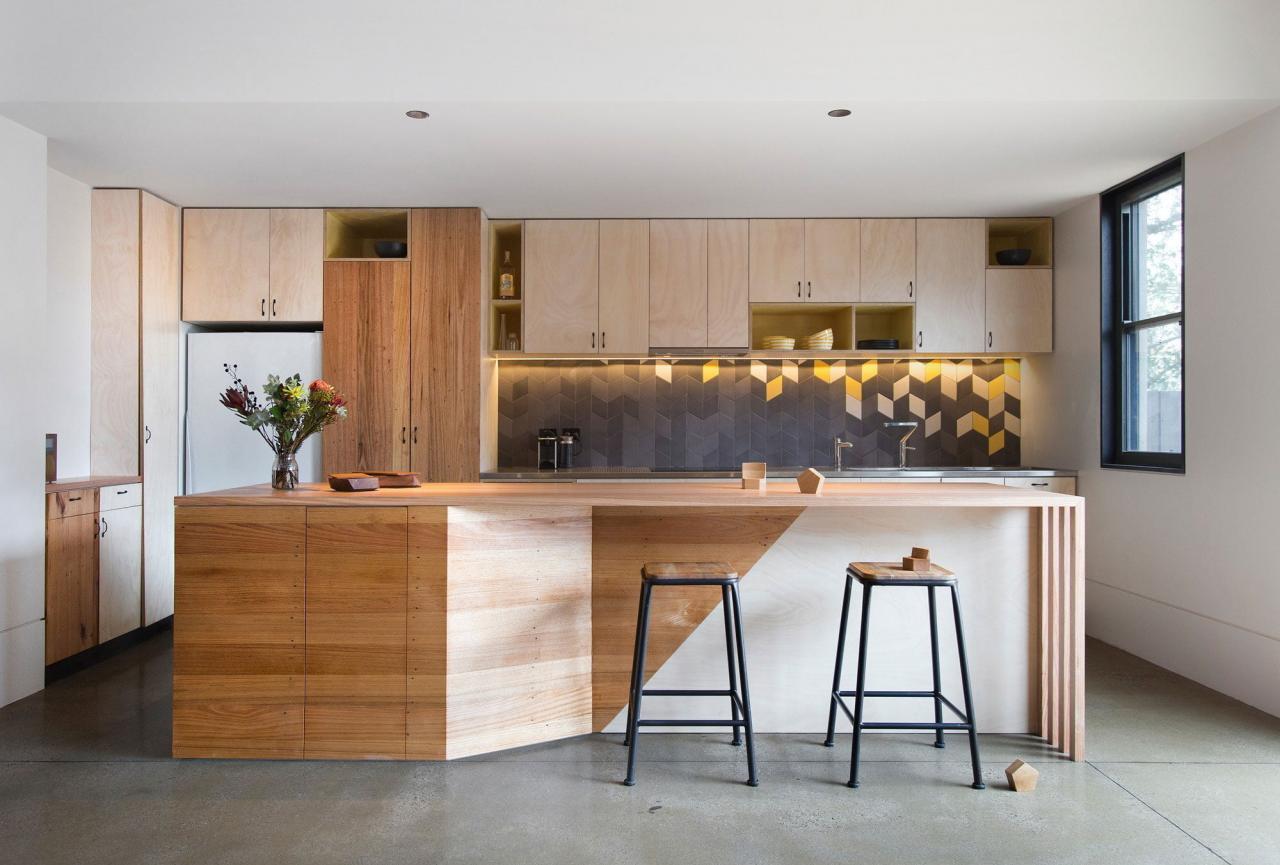
The heart of any home, especially a classic modern one, is undoubtedly the kitchen. A spacious kitchen isn’t just about ample counter space; it’s about creating a functional and aesthetically pleasing environment that caters to both everyday cooking and grand entertaining. This section delves into the layout, functionality, and design elements crucial to achieving a truly exceptional classic modern kitchen.
Kitchen Layouts for Classic Modern Homes
Choosing the right kitchen layout is paramount to maximizing both space and workflow. The classic modern aesthetic lends itself beautifully to several configurations, each offering unique advantages. Careful consideration of the available space and the family’s cooking habits is key to selecting the optimal layout.
Classic modern home design often prioritizes open-plan living, and a spacious kitchen is a key element. This emphasis on airy spaces is further enhanced by the impressive scale found in classic modern home design showcasing high ceilings , which creates a sense of grandeur that perfectly complements a large, well-designed kitchen. The result? A home that’s both stylish and incredibly functional, perfect for modern living.
- Galley Kitchen: Efficient and space-saving, a galley kitchen features two parallel counters with appliances and cabinetry in between. This layout works exceptionally well in narrower spaces, maximizing storage and counter space within a streamlined design. Imagine a sleek, minimalist galley kitchen with integrated appliances and handleless cabinetry, perfect for a smaller classic modern home.
- L-Shaped Kitchen: Offering a blend of functionality and openness, the L-shaped kitchen creates a natural workspace with two counters meeting at a right angle. This layout provides ample counter space and allows for easy movement between different kitchen zones. An L-shaped kitchen in a classic modern home could feature a large island for additional prep space and casual dining.
- Island Kitchen: The island kitchen is a hallmark of spacious modern design. A central island serves as a focal point, providing extra counter space, storage, and often a seating area. In a classic modern setting, the island could be crafted from sleek marble or quartz, with integrated seating and a subtle, yet stylish pendant lighting fixture above.
Classic Modern Kitchen Floor Plan Example
Consider a spacious kitchen, approximately 20′ x 15′, employing an L-shaped layout. The longer counter runs along one wall, housing a built-in refrigerator, oven, and microwave, all seamlessly integrated into the cabinetry. The shorter counter, perpendicular to the first, incorporates a dishwasher and a large sink with a window overlooking the backyard. A substantial island, approximately 8′ x 4′, sits centrally, providing ample prep space, storage, and seating for four.
The workflow is optimized: from refrigerator to prep area to cooking zone to sink, creating a smooth and efficient culinary experience. The materials are consistent with classic modern design: light-colored cabinetry with sleek, brushed nickel hardware, and a quartz countertop in a neutral tone.
Cabinetry and Countertops in a Classic Modern Kitchen
Cabinetry and countertops form the backbone of a classic modern kitchen’s aesthetic and functionality. Clean lines, minimalist hardware (or even handleless designs), and high-quality materials are essential. Common materials include wood (such as oak or walnut with a matte finish), lacquer, or high-gloss thermofoil for cabinets. Countertops often feature durable and elegant materials like quartz, marble, or engineered stone, chosen for their resistance to stains and scratches, and their ability to complement the overall design scheme.
A consistent color palette, typically featuring neutral tones, creates a sense of calm and sophistication.
Lighting Design for a Spacious Kitchen
Lighting plays a vital role in creating a functional and inviting atmosphere. Layered lighting is key: recessed lighting provides general illumination, under-cabinet lighting illuminates work surfaces, and pendant lights above the island create a focal point and ambient lighting. The style should complement the classic modern aesthetic; think sleek, minimalist fixtures in brushed nickel or matte black finishes.
Consider incorporating dimmer switches to adjust the lighting levels according to the time of day and activity. Natural light should also be maximized through strategically placed windows.
Material Selection and Color Palettes
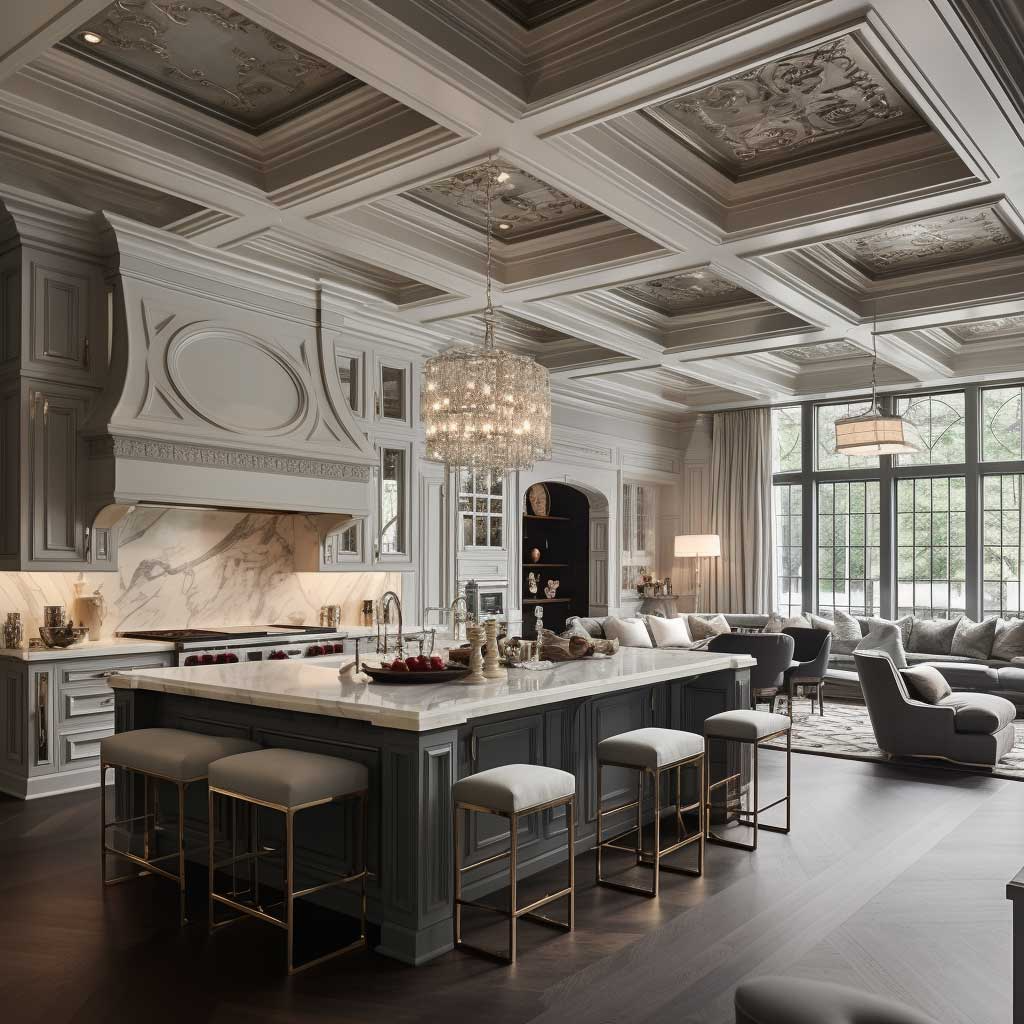
The heart of any classic modern home lies in the thoughtful selection of materials and colors. These elements work in concert to create a space that feels both timeless and contemporary, a balance that is particularly crucial in the kitchen, the often-considered heart of the home. The right choices can elevate the entire aesthetic, transforming a functional space into a stunning focal point.The interplay of textures and hues is key to achieving the desired effect.
Natural materials bring warmth and authenticity, while carefully chosen color palettes establish the overall mood and style. Let’s explore how these elements contribute to the classic modern kitchen design.
Natural Material Usage in Classic Modern Kitchens
Natural materials are integral to the classic modern aesthetic. The inherent beauty and tactile quality of wood, stone, and other natural elements create a sense of grounding and sophistication. Think of richly veined marble countertops, warm oak cabinetry, and the textural contrast of a stone backsplash. These elements introduce a sense of timelessness that transcends fleeting trends. The use of sustainable and ethically sourced materials also aligns with the environmentally conscious values often associated with modern design.
For instance, reclaimed wood beams can add character and a unique story to the space, while sustainably harvested bamboo can offer a lighter, more contemporary feel.
Classic modern home design often prioritizes spacious kitchens, perfect for culinary enthusiasts. This focus on open, functional spaces complements the clean lines and uncluttered feel championed by a classic modern home design with a minimalist aesthetic , ensuring a harmonious flow throughout the home. The result? A spacious kitchen that’s both stylish and effortlessly practical, reflecting the best of contemporary living.
Classic Modern Kitchen Color Palettes
Color selection is paramount in achieving a classic modern look. The palette should evoke a sense of calm and sophistication, often leaning towards neutral tones with strategic pops of color. A popular approach involves using a base of warm grays (#99A3A4), creamy whites (#FAF9F6), or soft beiges (#F5F5DC) for walls and cabinetry. These neutrals provide a versatile backdrop that allows other elements, like colorful artwork or patterned textiles, to stand out.
Accent colors can be introduced through appliances, accessories, or even a bold statement piece of furniture. Consider incorporating muted blues (#64B5F6), deep greens (#2E8B57), or warm browns (#A0522D) for a balanced and harmonious feel. These colors add depth and visual interest without overwhelming the space.
Countertop Material Comparison, Classic modern home design with a spacious kitchen
The countertop is a significant design element in any kitchen, and the choice of material significantly impacts the overall aesthetic and functionality. Let’s compare three popular options for a classic modern kitchen: quartz, granite, and marble.Quartz, an engineered stone, offers durability, stain resistance, and a wide variety of colors and patterns. Granite, a natural stone, provides unique veining and a luxurious feel but requires more maintenance.
Marble, another natural stone, boasts elegant veining and a timeless appeal, but it’s susceptible to staining and etching. The choice depends on the desired level of maintenance, budget, and aesthetic preference.
Material Options for a Classic Modern Kitchen
| Material | Pros | Cons | Suitability for Classic Modern |
|---|---|---|---|
| Quartz | Durable, stain-resistant, wide variety of colors | Can appear less natural than stone | Excellent – offers durability and modern aesthetics |
| Granite | Unique veining, natural beauty, durable | Requires sealing, can be expensive | Good – adds a touch of luxury and natural elegance |
| Marble | Elegant veining, timeless appeal | Susceptible to staining and etching, requires maintenance | Good, but requires careful consideration – best suited for low-traffic areas or with appropriate sealing |
| Wood (e.g., Oak, Walnut) | Warmth, natural beauty, adds character | Requires regular maintenance, susceptible to water damage | Good for cabinetry and islands – requires careful selection and sealing |
| Stone (e.g., Limestone, Slate) | Textural interest, durability (depending on type) | Can be porous (depending on type), requires sealing | Excellent for backsplashes and flooring – choose durable types |
Appliances and Technology Integration
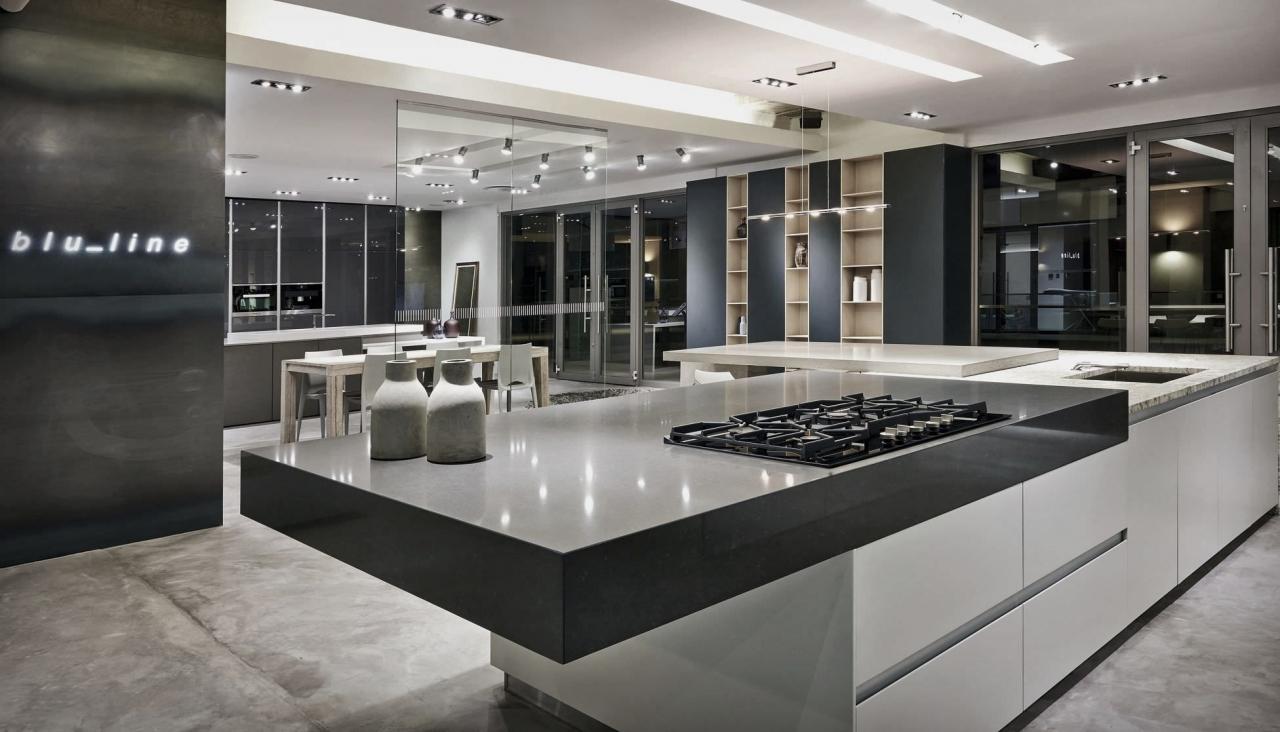
A classic modern kitchen isn’t just about aesthetics; it’s about seamless functionality and the smart integration of technology. The right appliances and smart home features elevate the cooking experience and enhance the overall lifestyle within this design aesthetic. Choosing appliances that blend seamlessly with the overall design while offering cutting-edge performance is key.High-end appliances are crucial for achieving both form and function in a classic modern kitchen.
These appliances not only perform exceptionally well but also contribute to the overall sophisticated and minimalist aesthetic. Careful consideration of materials and finishes ensures a cohesive look.
High-End Appliance Selection for Classic Modern Design
Subtlety and elegance are paramount in a classic modern kitchen. Imagine a sleek, professional-grade stainless steel range hood, almost disappearing against a similarly toned backsplash. This contrasts beautifully with a built-in refrigerator featuring a panel that matches the cabinetry, maintaining a clean, integrated look. A built-in coffee system, seamlessly integrated into the cabinetry, adds a touch of luxury and convenience.
Similarly, a warming drawer, tucked away beneath the countertop, provides additional functionality without compromising the clean lines of the design. These choices prioritize performance and blend seamlessly into the overall design scheme.
Smart Home Technology Integration
Smart home technology enhances both convenience and control within the classic modern kitchen. Imagine voice-activated lighting that adjusts to the mood and task, or a smart refrigerator that tracks inventory and suggests recipes based on available ingredients. A smart oven that allows you to preheat remotely, monitor cooking progress from your phone, and even receive notifications when dishes are ready, exemplifies seamless technology integration.
These smart features seamlessly blend with the clean lines and minimalist aesthetic of the classic modern design, enhancing functionality without sacrificing style. Consider smart faucets that dispense filtered water and offer precise temperature control, further showcasing the effortless blend of technology and design.
Incorporating Hidden Appliances
Maintaining a clean and uncluttered aesthetic is central to classic modern design. Hidden appliances contribute significantly to this goal. A pop-up appliance garage neatly conceals small appliances like toasters and blenders, keeping countertops clear. Built-in microwave ovens, integrated into upper cabinets, further enhance this minimalist approach. Even trash and recycling systems can be cleverly integrated into the cabinetry, eliminating visible bins and maintaining a streamlined appearance.
The emphasis is on functionality that is discreet and doesn’t detract from the overall design’s elegance.
Essential and Desirable Appliances for a Spacious Classic Modern Kitchen
A spacious kitchen provides the opportunity to include both essential and desirable appliances.
The following list details appliances that contribute to a functional and stylish classic modern kitchen:
- Essential: Refrigerator (ideally built-in and paneled), range with oven, dishwasher (integrated), sink with faucet, ventilation hood.
- Desirable: Wine refrigerator, warming drawer, coffee system (built-in), microwave (built-in), garbage disposal, ice maker, second oven (for baking or other specialized cooking).
Illustrative Examples of Classic Modern Kitchens
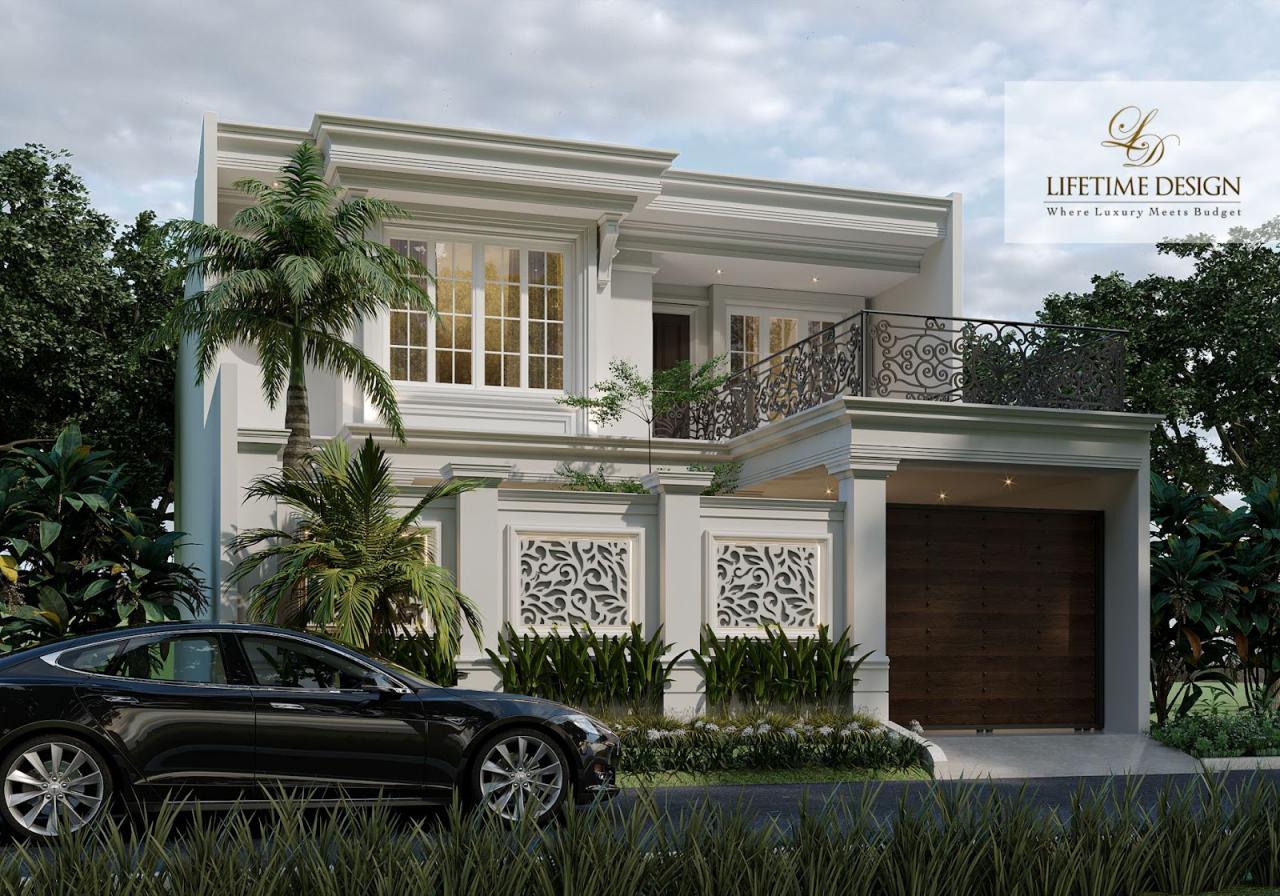
Classic modern kitchen design offers a captivating blend of timeless elegance and contemporary functionality. By carefully selecting materials, colors, and appliances, homeowners can craft a space that reflects their personal style while embracing the core tenets of classic modern aesthetics. Let’s explore three distinct interpretations of this style, each showcasing a unique approach to design and ambiance.
Minimalist Classic Modern Kitchen
This kitchen prioritizes simplicity and clean lines. Imagine a space bathed in soft, natural light, streaming through expansive windows. The color palette is restrained, featuring neutral tones like crisp white, cool gray, and subtle beige. The cabinetry is sleek and handleless, crafted from high-gloss lacquered wood or matte-finish concrete, creating a seamless, almost minimalist aesthetic. Countertops are crafted from a pristine, polished quartz, offering both durability and a sophisticated look.
The overall effect is one of understated elegance, where functionality reigns supreme. Subtle textural contrasts are introduced through the use of a light-colored wood flooring and perhaps a textured linen pendant light above the island. The lighting is strategically placed, avoiding harsh shadows and emphasizing the clean lines of the design.
Rustic Classic Modern Kitchen
In contrast to the minimalist approach, this design embraces warmth and natural materials. Think of a kitchen where reclaimed wood beams span the ceiling, adding a touch of rustic charm to the otherwise modern space. The cabinetry is crafted from rich, dark wood, perhaps with a slightly distressed finish, providing a sense of age and character. The countertops, however, maintain a clean, modern feel, possibly using a honed marble or a concrete countertop with a subtle texture.
The backsplash might feature a natural stone, like a warm-toned limestone, adding to the overall rustic feel. The lighting in this space is warmer and more inviting, perhaps incorporating both recessed lighting and statement pendant lights made from wrought iron or natural materials. The overall ambiance is cozy and inviting, balancing the rustic elements with the sleek lines of the classic modern aesthetic.
The color palette is anchored by warm neutrals, with pops of color introduced through carefully selected accessories and artwork.
Luxurious Classic Modern Kitchen
This kitchen exudes sophistication and opulence. Imagine a spacious room with floor-to-ceiling windows offering stunning views. The cabinetry is custom-made, crafted from high-end materials such as polished walnut or exotic veneers. Countertops are made from premium materials like Calacatta marble or a luxurious, dark-colored granite. The backsplash is a statement piece, perhaps a mosaic of handcrafted tiles or a stunning slab of polished onyx.
Lighting is crucial in this space, with carefully placed recessed lighting, under-cabinet lighting, and elegant crystal chandeliers adding to the luxurious feel. High-end appliances, seamlessly integrated into the design, complete the picture. The color palette is rich and deep, with jewel tones and metallic accents adding to the overall sense of luxury. The textures are varied and luxurious, ranging from the smooth polish of the marble countertops to the subtle grain of the wood cabinetry.
The overall ambiance is one of refined elegance and sophisticated comfort.
Integrating the Kitchen with the Overall Home Design
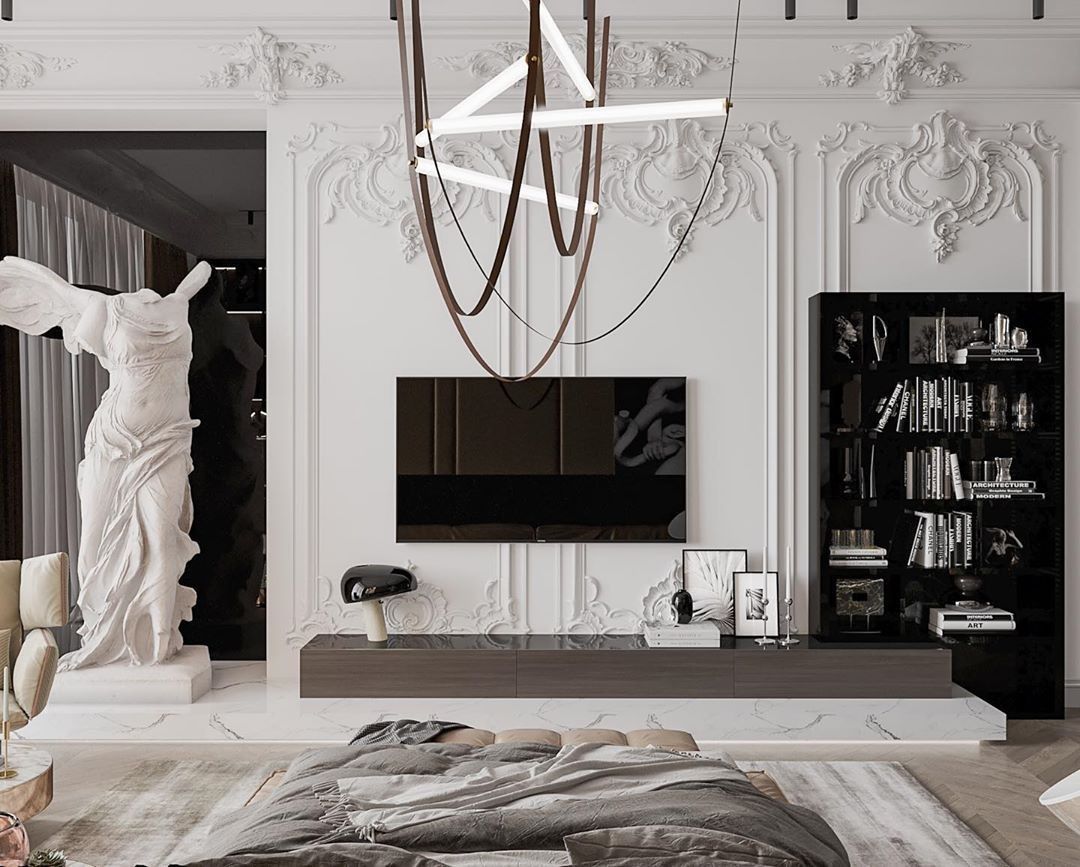
A classic modern home prioritizes seamless flow and visual harmony. The kitchen, often the heart of the home, shouldn’t feel like an isolated space but rather a natural extension of the living areas. Achieving this requires careful consideration of design elements, spatial planning, and material choices to ensure a cohesive and elegant aesthetic.The design of the kitchen must resonate with the overall classic modern style of the home.
This means maintaining consistency in materials, color palettes, and architectural details. For instance, if the living room features clean lines and minimalist furniture, the kitchen should reflect those same principles, avoiding ornate details or cluttered designs. A consistent use of natural materials like wood and stone, along with a neutral color palette, will help unify the spaces.
Open-Plan Concepts and Seamless Transitions
Open-plan layouts are frequently employed in classic modern homes to foster a sense of spaciousness and connection between different living areas. Incorporating the kitchen into an open-plan design allows for a natural transition between the cooking and dining spaces, and often the living room as well. A large kitchen island can act as a visual and functional divider, creating a sense of separation without completely isolating the kitchen.
Alternatively, a subtle change in flooring material—perhaps from polished concrete in the kitchen to hardwood in the adjacent living room—can subtly delineate spaces while maintaining visual continuity. Imagine a kitchen with sleek, minimalist cabinetry seamlessly flowing into a living area with a similar color scheme and a fireplace clad in the same stone as the kitchen backsplash. This creates a harmonious, sophisticated atmosphere.
Maintaining a Consistent Design Language
Maintaining a consistent design language is paramount in achieving a cohesive classic modern aesthetic throughout the entire home. This goes beyond simply using similar materials; it involves a unified approach to architectural details, lighting, and even the hardware used in cabinetry and fixtures. For example, if brushed nickel fixtures are used in the bathrooms, they should also be incorporated into the kitchen.
Similarly, consistent use of recessed lighting or pendant lights will help maintain visual harmony. The repetition of specific design motifs—such as a geometric pattern in the kitchen backsplash echoed in a throw pillow in the living room—can add a subtle yet sophisticated layer of unity to the design. This intentional repetition avoids a disjointed feel, ensuring that every space feels like a part of the larger, carefully curated whole.